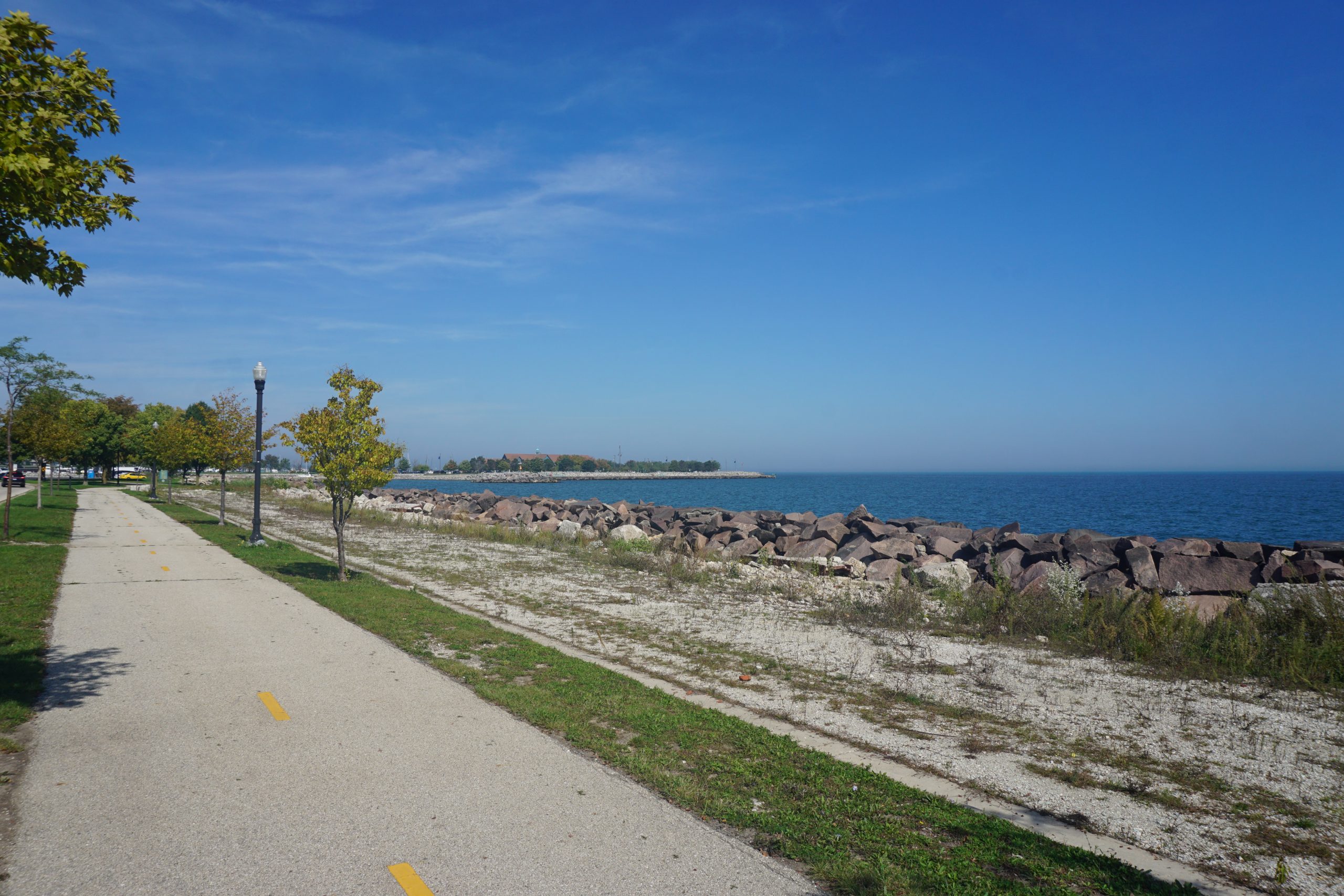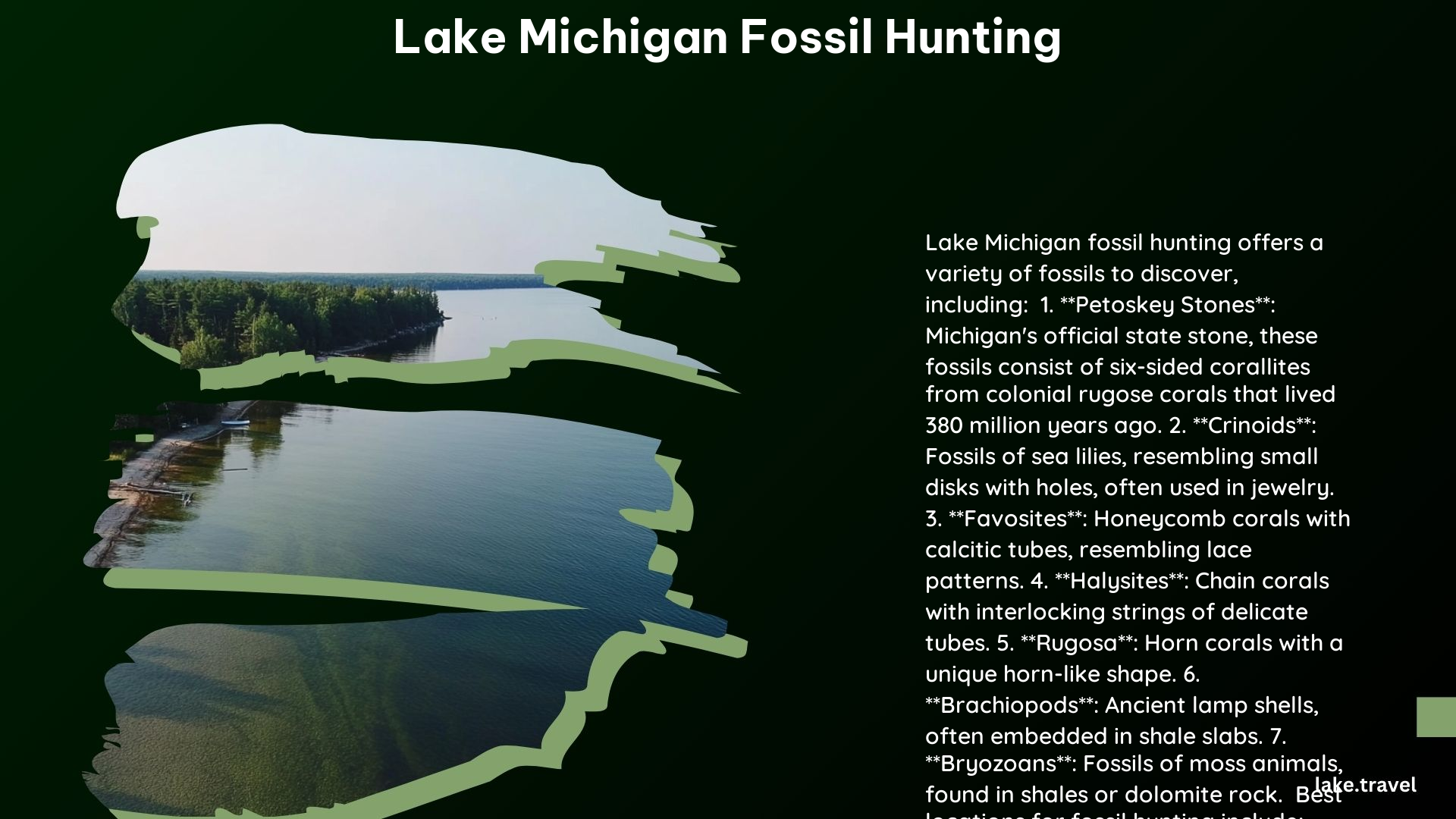Lake Michigan is a treasure trove for fossil enthusiasts, offering a unique glimpse into the region’s ancient geological history. From the iconic Petoskey stones to the intricate honeycomb corals, the beaches along the shores of Lake Michigan are a veritable playground for those seeking to uncover the secrets of the prehistoric past. In this comprehensive guide, we’ll explore the common fossils found in the area, the best beaches for fossil hunting, and essential tips to ensure a successful and responsible adventure.
Common Fossils Found on Lake Michigan Beaches

- Crinoids: These fossils are part of the stems of an animal related to starfish. They look like small disks with holes through them and are quite abundant in the area.
- Favosites (Honeycomb Corals): These fossils consist of closely grouped calcitic tubes resembling honeycomb. The pattern is smaller than that of a Petoskey Stone and looks more like lace.
- Petoskey Stones: These fossils are from an extinct coral that lived 380 million years ago. They have six-sided corallites and are polished by the waves and sand.
- Rugosa (Horn Corals): These fossils are pieces of coral with a unique horn-like shape.
- Halysites: These fossils are formed from interlocking strings of tiny chains.
Best Beaches for Fossil Hunting

- Pilgrim Haven Natural Area, South Haven Township: This beach is known for its broad stretch of rocks and is a great spot for finding fossils.
- Rocky Gap County Park, Benton Harbor: This park has a mix of sand and rocks, making it suitable for finding various types of fossils.
- Deerlick Creek Park, South Haven: This small beach access area is good for finding fossils, especially near the rock wall.
- Pier Cove Park, Fennville: This park offers plenty of rocks to search through, making it a good spot for fossil hunting.
Tips for Successful Fossil Hunting
- Look for less popular beaches: Avoid crowded areas to increase your chances of finding fossils.
- Avoid maintained beaches: These beaches may have stones removed as part of cleaning, reducing the likelihood of finding fossils.
- Be prepared to walk: Some beaches may require walking long distances to find fossil-rich areas.
- Look closely: Many fossils are small, so pay attention to details.
- Go after wind storms: These storms can bring new fossils to the surface, making them easier to find.
- Hunt after rain: Wet conditions make it easier to identify fossils.
- Bring a bucket or bag: Collect your finds in a container to keep them organized.
Important Considerations
- National Shoreline and State Parks: It is illegal to remove stones from National Shorelines, and there are limits to the amount you can collect from State Parks (DNR rules).
- Respect the Environment: Always strive to leave the shoreline in better condition than you found it, and dispose of any trash you encounter.
By following these tips and visiting the right beaches, you can have a successful and enjoyable fossil hunting experience on Lake Michigan. Remember to respect the natural environment and follow all applicable regulations to ensure the preservation of these precious geological treasures for generations to come.
Reference:
– Michigan Department of Natural Resources – Fossil Hunting
– Petoskey Stone – Michigan’s State Stone
